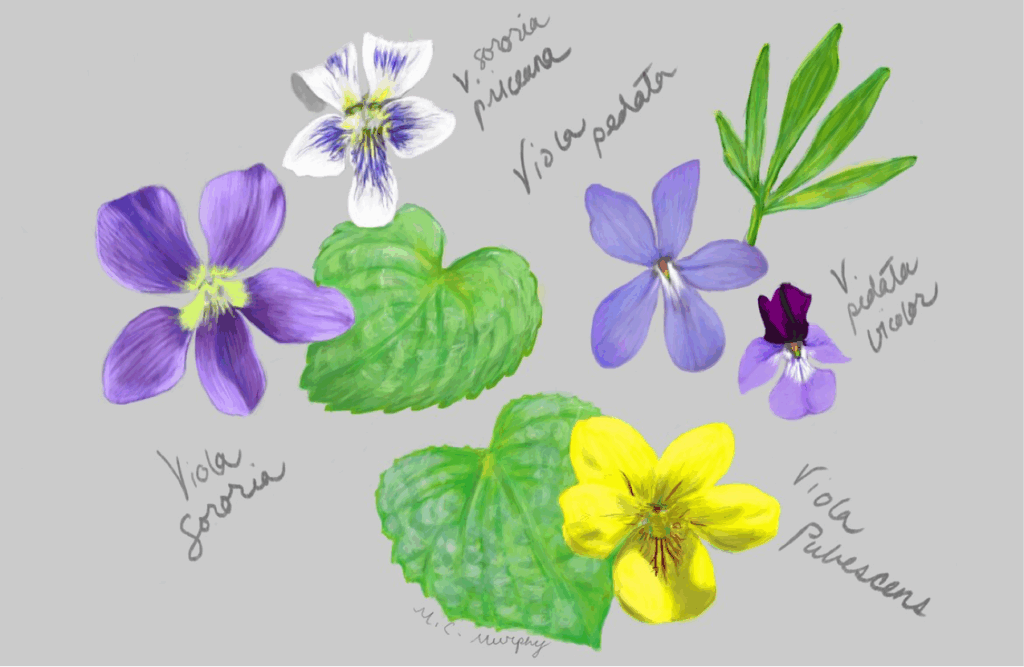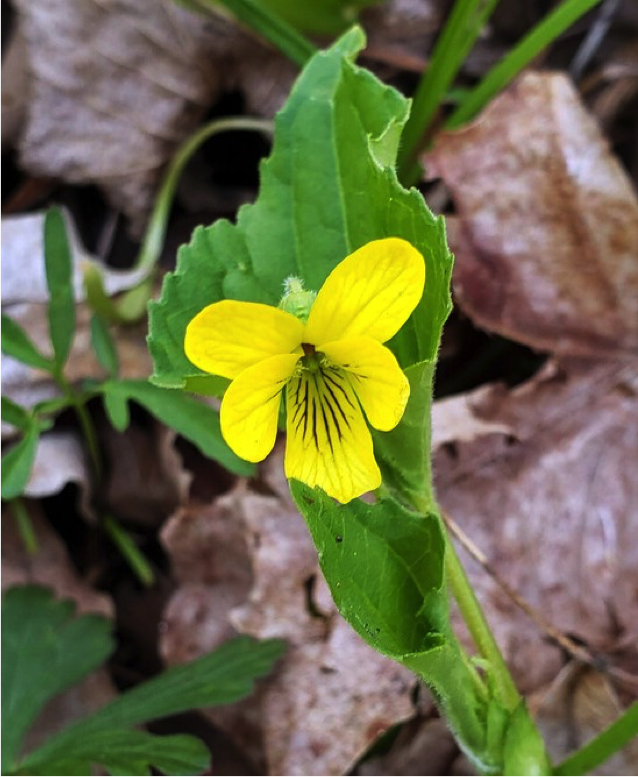Violets: Ant’s dream or taxonomist’s nightmare?

Small but formidable, frustrating the manicured lawn gardener and the native plant enthusiast alike: it’s the genus Viola, the violets. More than two dozen violet species have been recorded in our area and the violet was named the state flower of Illinois. But which one? The school children tasked with deciding the state flower in 1907 did not specify (they also chose “the oak” as the state tree). The law has since been updated to reflect that the “native violet” is the designated state flower of Illinois (illinois.gov still simply lists “the violet” as our designated flower).
More than two dozen violet species have been recorded in our area and the violet was named the state flower of Illinois. But which one?
The internet generally assumes that those school children and the updated law intended for the common blue violet (Viola sororia) to be our state flower. That is mainly because it grows everywhere, even very degraded habitat like lawns, which our state boasts lots of.
Most plants are not concerned with making things easy for taxonomists and the violet family is no exception. A glabrous (non-hairy) variant of Viola sororia has been given the name Viola pratincola, and “tends to be the common weedy violet of old field and lawns,” according to Wilhelm and Rericha’s Flora of the Chicago Region.
Most plants are not concerned with making things easy for taxonomists and the violet family is no exception.
The flora also lists the (unfortunately named) Confederate violet (Viola priceana) as a distinct species, but acknowledges that “this violet may not be specifically distinct from the polymorphic complex we are calling Viola sororia.” However, with its white corollas streaked with blue, the flora authors have “recogniz[ed] it here to allow the student to discern at least the white-flowered forms” of the highly variable and frequently encountered Viola sororia.
Meanwhile, the yellow flowers of Viola pubescens are commonly found in our area’s mesic woodlands, forests, and savannas. This species has also vexed taxonomists. Wilhelm and Rericha note that “Some authors have thrown up their hands trying to sustain this species and its variety scabriuscula as distinct, which attitude affords our sincerest empathy.”

More specialized is Viola pedata, which mainly occurs in prairies and savannas with sandy or gravelly soils. Its common name—bird’s foot violet—refers to its narrowly lobed leaf shape. Its distinct leaf and blue-purple corollas lend to its easy identification. This species too has a strongly bicolored variant.
Another native violet, the uncommon prairie violet (Viola pedatifida) has a similar leaf to Viola pedata, but features a slightly smaller flower with a tuft of white hair at its throat. Its habitats include black soil prairie and savannas and, as illinoiswildflowers.info notes, Viola pedatifida “can be considered an indicator plant of high-quality prairie remnants.”
All our violets are attractive to ants, which carry their eliaosome-enriched seeds to their nest. The ants eat the elaiosome but not the dispersed seeds, which are mechanically ejected from their capsules once they ripen.
Violets are found in pretty much every habitat in our area, blanketing the ground with green in spring before much else has emerged.
If school children were asked to pick a state flower today (maybe with the help of iNaturalist), perhaps they would still choose the comfortingly familiar and resilient violet, which hangs on despite all the pressures of a century of rapid development and habitat degradation.

